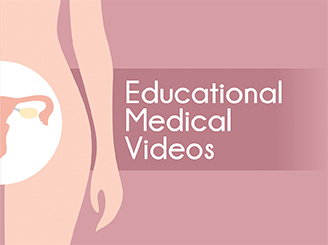Barriers to Incontinence Treatment
October 1, 2015, no responses, by: Women Health Center, Tags:
A recent qualitative focus-group study has found that there are a number of barriers leading to lack of treatment for incontinence.
Fear of treatment and lack of knowledge were the top 2 problems. Other barriers were a belief that incontinence is a normal part of aging and provider barriers.
“Even in insured and educated study group, fear of treatment and lack of knowledge were the most frequently reported barriers.
Less than 50% of affected women seek treatment, but among those who seek and receive treatment, an improvement in continence of about 80% can be achieved, the authors noted.
The message to physicians is to screen patients and ask if they have incontinence.
“The message to physicians is to screen patients and ask if they have incontinence “And if they’re bothered by it, offer treatment and follow-up.”
Direct-to-consumer advertising of drugs for overactive bladder has improved the situation in recent years, but when women seek care, physicians aren’t always helpful.
Eight barriers to treatment were identified during the focus-group sessions:
- Normative thinking (urinary incontinence is a normal part of aging, childbearing, or hereditary)
- Other priority health issues
- Fear of treatment, including adverse effects of medication and surgery
- Avoidance/denial (“if I ignore it, it will go away”)
- Communication issues, including embarrassment and hesitancy to mention the problem, particularly if the visit is under time constraints
- Provider barriers, including not asking about urinary incontinence, or not referring on.
- Limitations to access, need for referrals, and need for multiple appointments
- Lack of knowledge about treatment options
Fear of treatment was cited as a barrier by 25% of the untreated patients and 27% of the treated patients. Lack of knowledge was cited by 19% of both groups.
Provider barrier, cited by 12% of the untreated patients and 15% of the treated patients, was tied with normative thinking for third place, cited by 12% of the untreated patients and 16% of the treated patients.
Communication issues came in next, cited by 9% and 12%, respectively.
Some of the women reported that physicians told them that urinary incontinence is a normal part of aging.
The authors noted that because urinary incontinence affects younger women as well, it might be a good idea to screen all women older than 35 years who are done with childbearing.
Categories
- Endometriosis (3)
- Female Sexual dysfunction (1)
- General (7)
- Incontinence (1)
- Infertility (2)
- Interstitial Cystitis (1)
- Menopause (5)
- Overactive Bladder (1)
- Polycystic Ovaries (1)
- Surgical (2)
Archives
- October 2017 (2)
- March 2017 (1)
- March 2016 (1)
- February 2016 (1)
- November 2015 (3)
- October 2015 (5)
- September 2015 (1)
- August 2015 (2)
- July 2015 (3)
- March 2015 (2)
- January 2015 (1)
Recent Posts
- How Accurate is biopsy sampling in Endometrial Cancer?
- Hormone Therapy: WHI study Follow up reveals no change in Mortality after 18-Year
- How to manage Interstitial Cystitis/Bladder Pain Syndrome?
- Potential Benefits of Diagnosis and Treatment on Health Outcomes Among Elderly People With Symptoms of Overactive Bladder
- The Zika Virus summarised



Leave a Reply